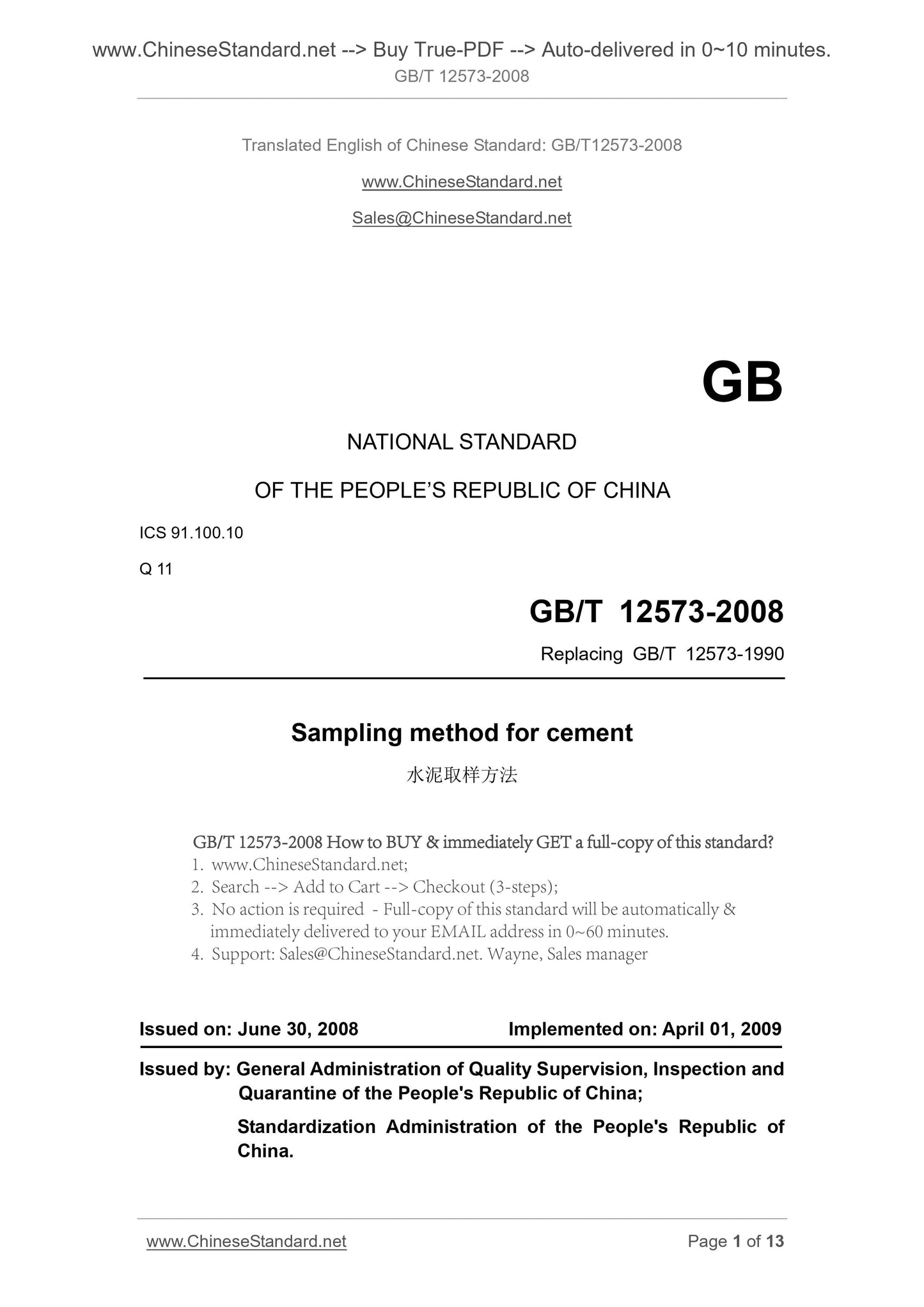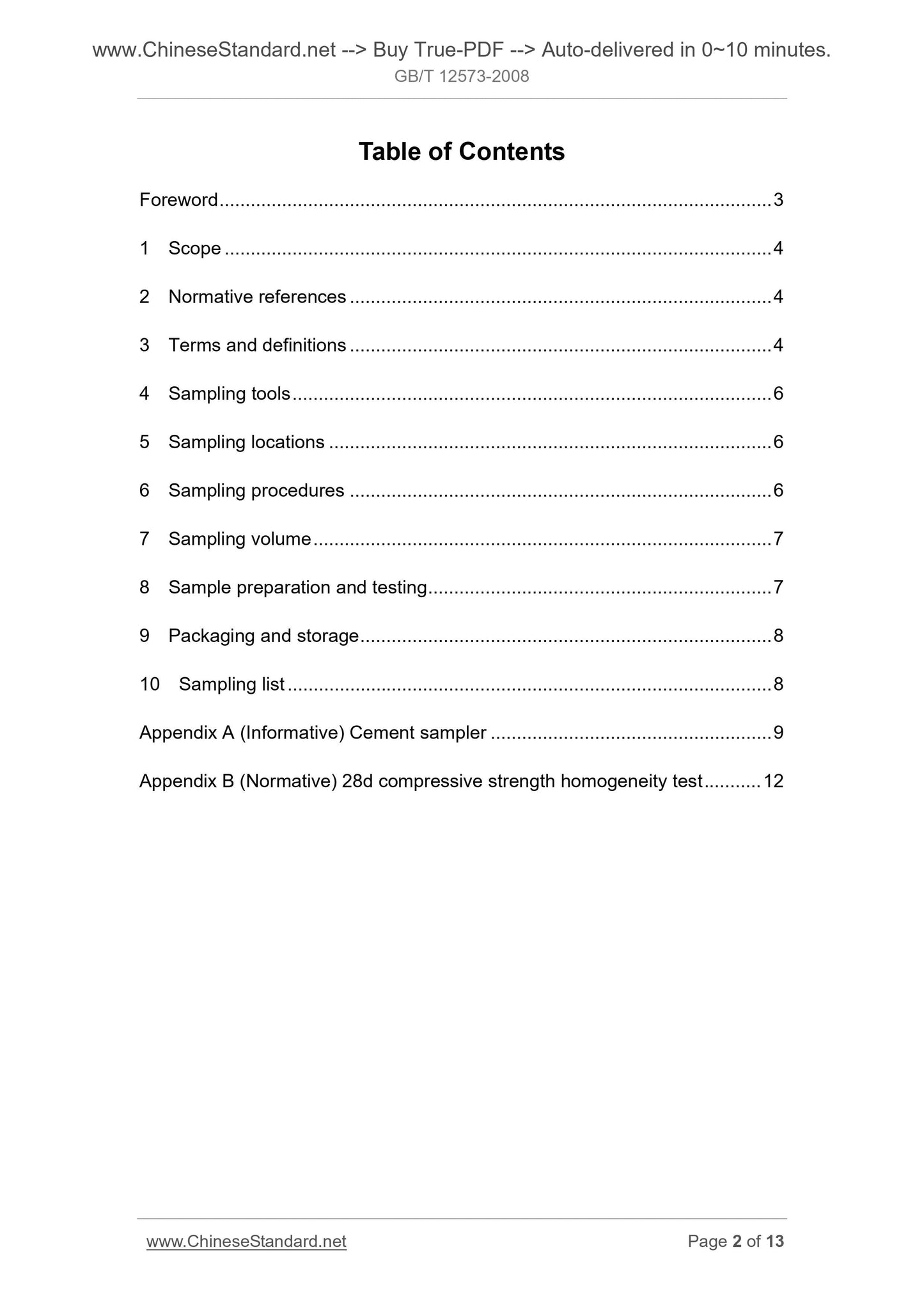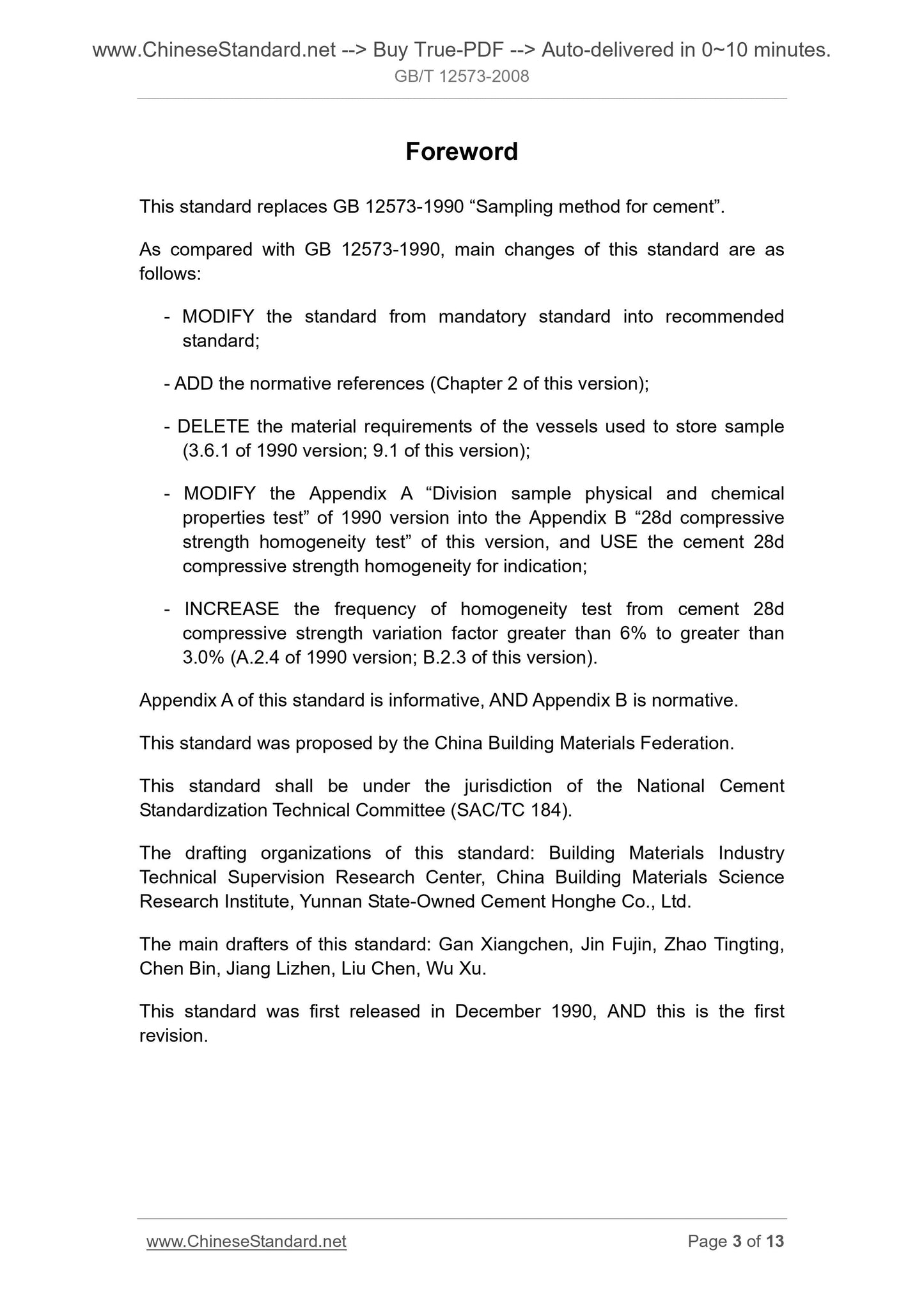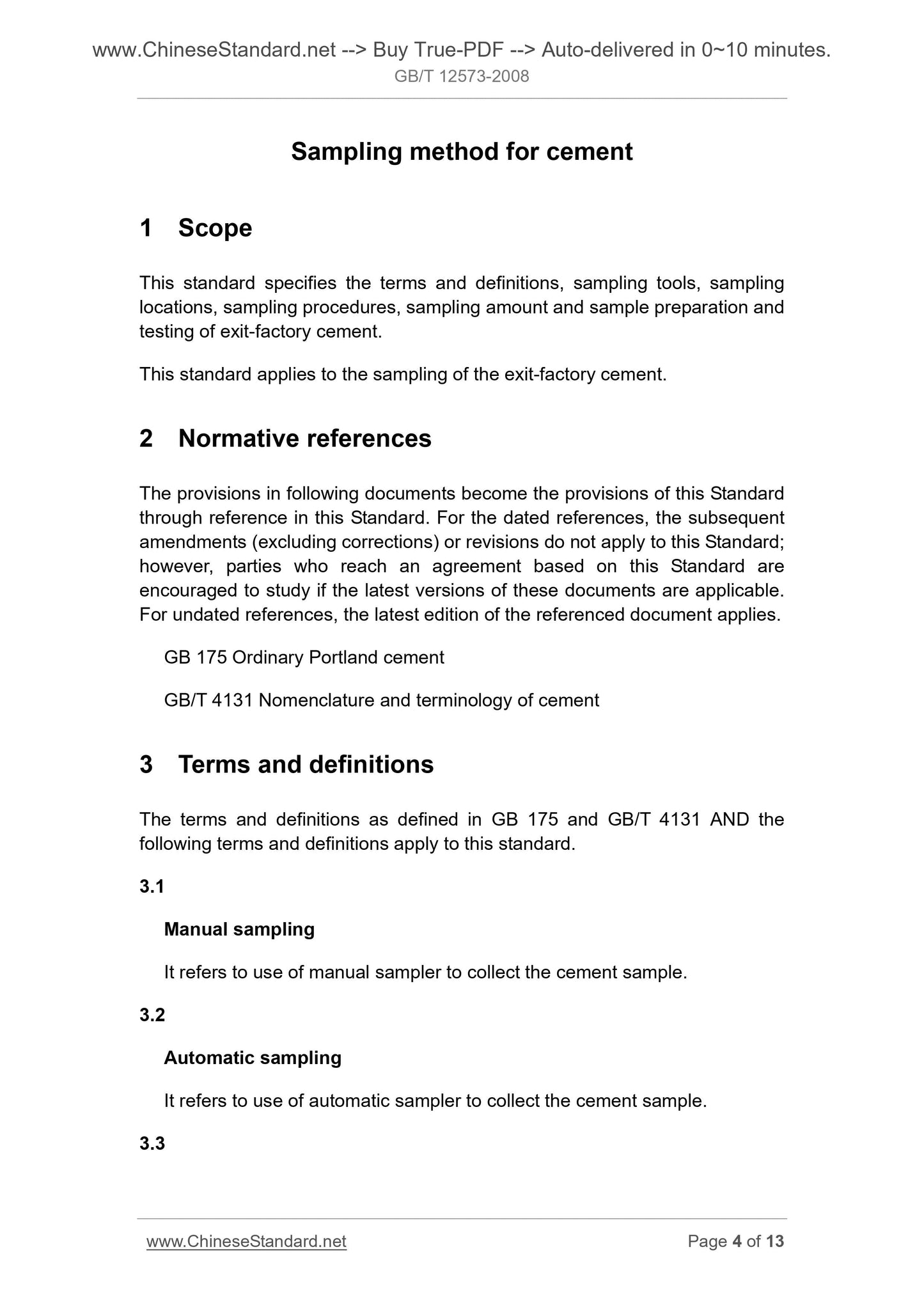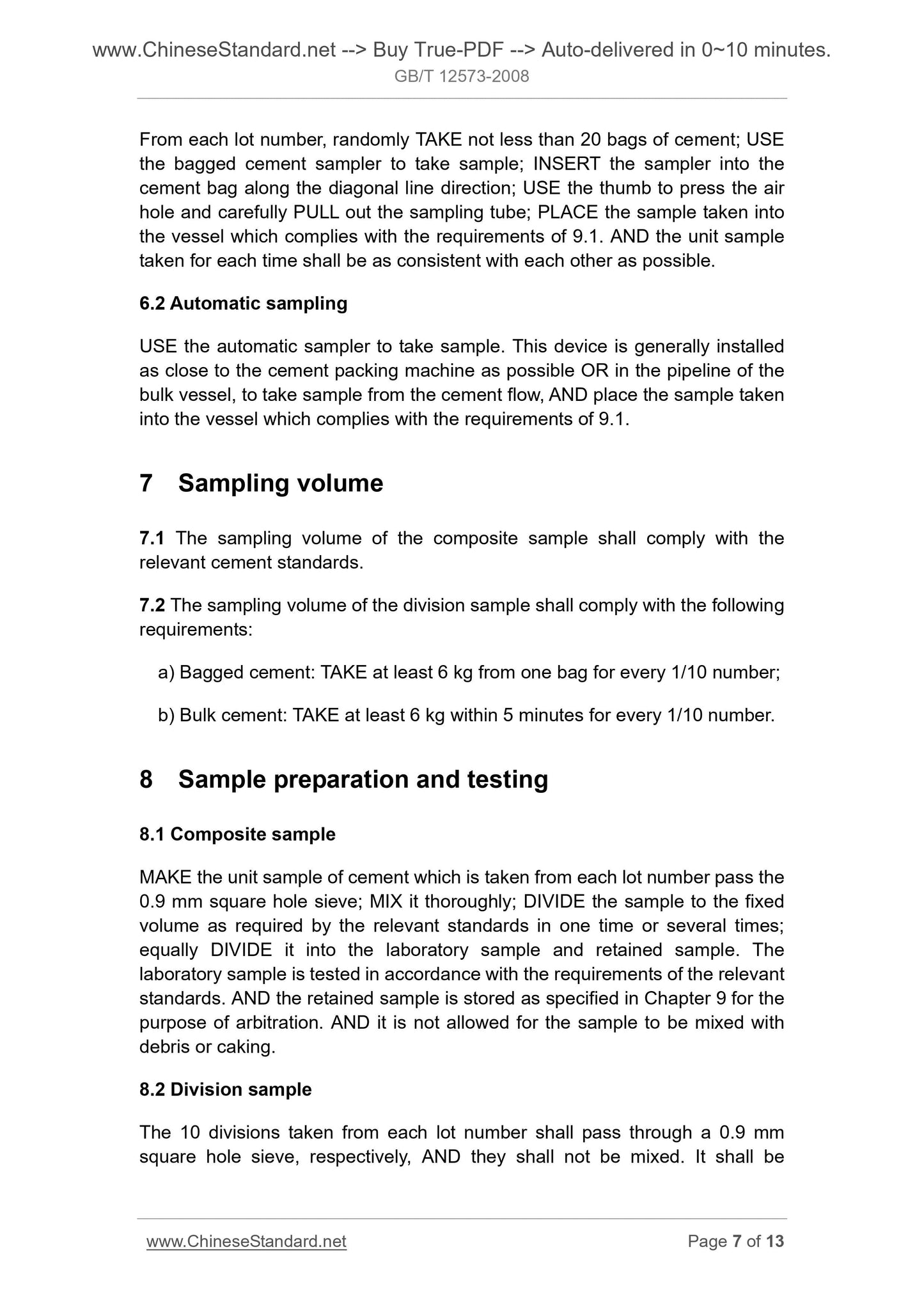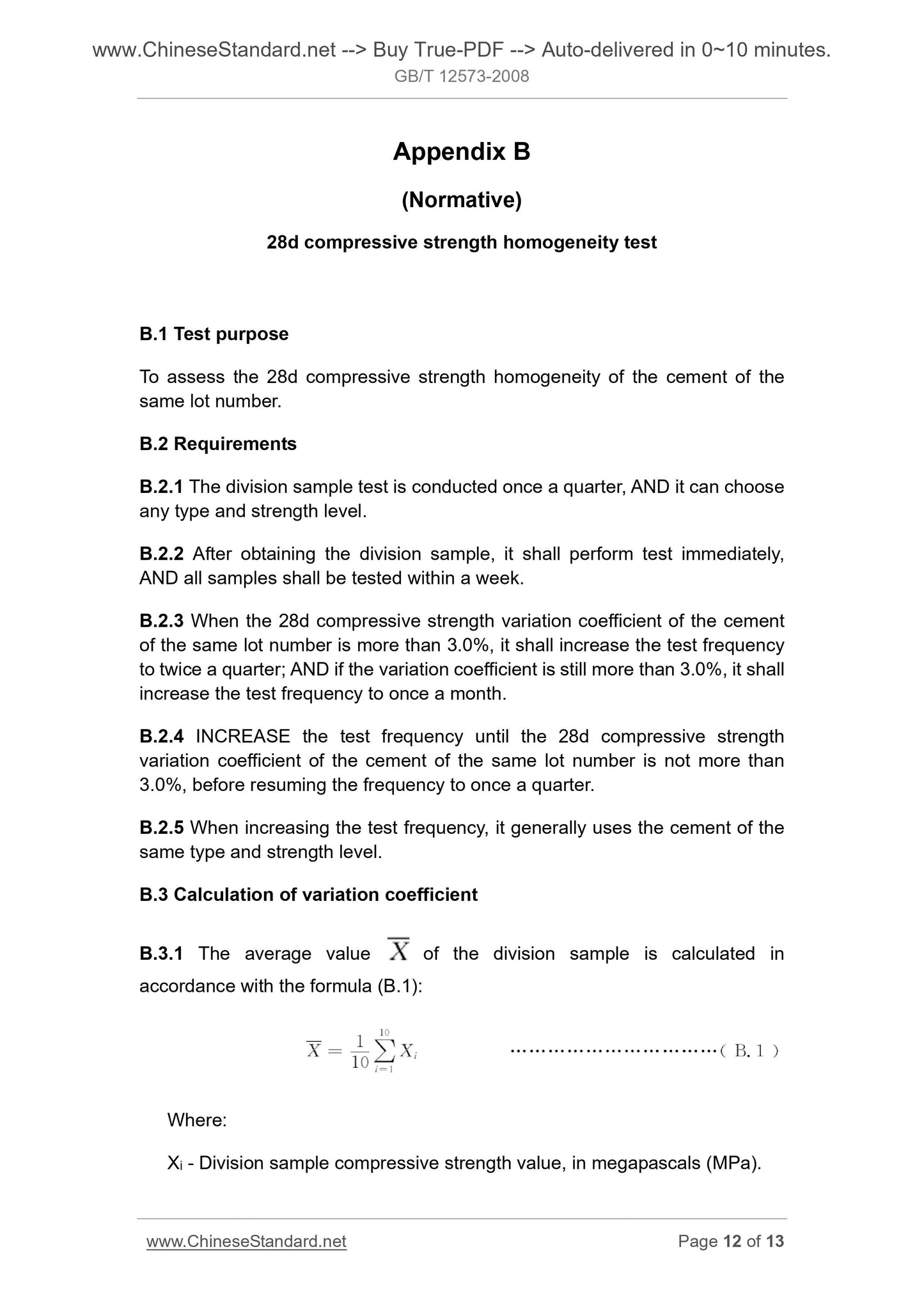1
/
of
6
www.ChineseStandard.us -- Field Test Asia Pte. Ltd.
GB/T 12573-2008 English PDF (GB/T12573-2008)
GB/T 12573-2008 English PDF (GB/T12573-2008)
Regular price
$85.00
Regular price
Sale price
$85.00
Unit price
/
per
Shipping calculated at checkout.
Couldn't load pickup availability
GB/T 12573-2008: Sampling method for cement
Delivery: 9 seconds. Download (and Email) true-PDF + Invoice.Get Quotation: Click GB/T 12573-2008 (Self-service in 1-minute)
Newer / historical versions: GB/T 12573-2008
Preview True-PDF
Scope
This standard specifies the terms and definitions, sampling tools, samplinglocations, sampling procedures, sampling amount and sample preparation and
testing of exit-factory cement.
This standard applies to the sampling of the exit-factory cement.
Basic Data
| Standard ID | GB/T 12573-2008 (GB/T12573-2008) |
| Description (Translated English) | Sampling method for cement |
| Sector / Industry | National Standard (Recommended) |
| Classification of Chinese Standard | Q11 |
| Classification of International Standard | 91.100.10 |
| Word Count Estimation | 10,133 |
| Date of Issue | 2008-06-30 |
| Date of Implementation | 2009-04-01 |
| Older Standard (superseded by this standard) | GB 12573-1990 |
| Quoted Standard | GB 175; GB/T 4131 |
| Regulation (derived from) | National Standard Approval Announcement 2008 No.11 (Total No.124) |
| Issuing agency(ies) | General Administration of Quality Supervision, Inspection and Quarantine of the People's Republic of China, Standardization Administration of the People's Republic of China |
| Summary | This standard specifies the terms and definitions cement factory sampling methods, sampling tools, sampling site, sampling step, sample volume and sample preparation and other tests. This standard applies to factory- cement samples. |
Share
